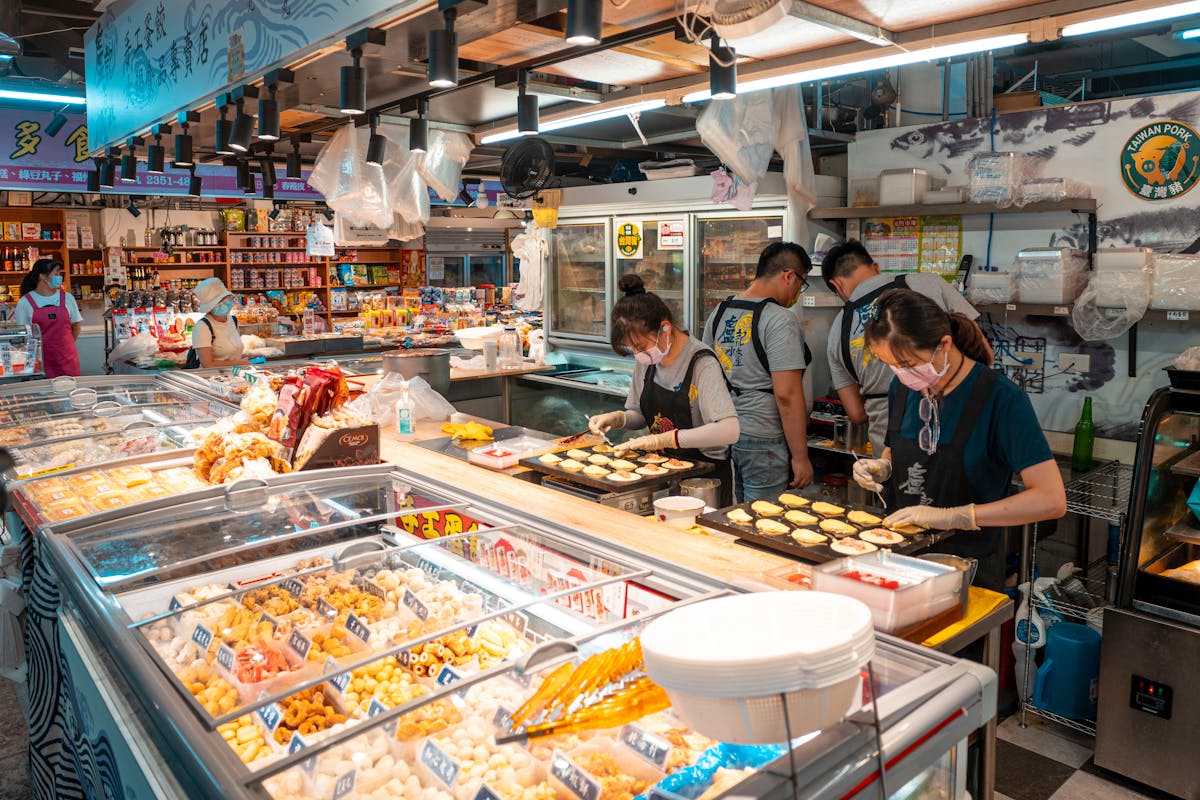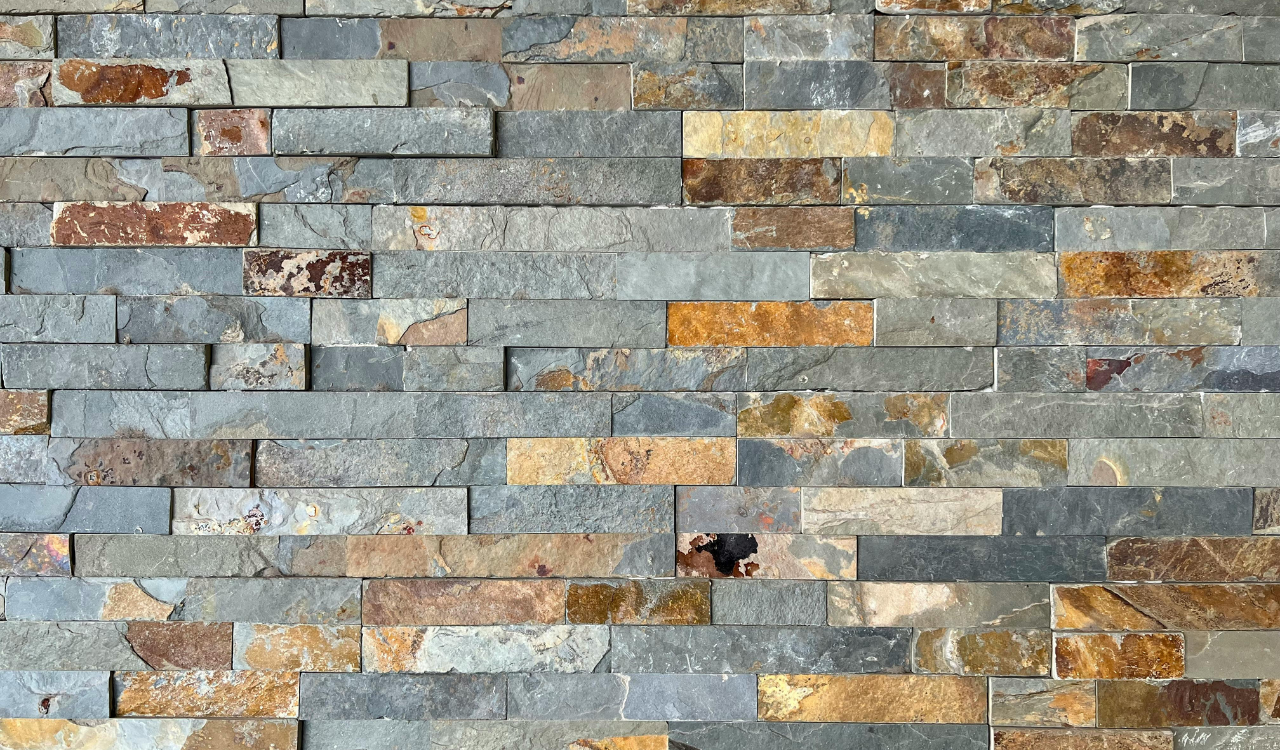Is It Safe to Eat Moldy Cheese Or Should You Toss It
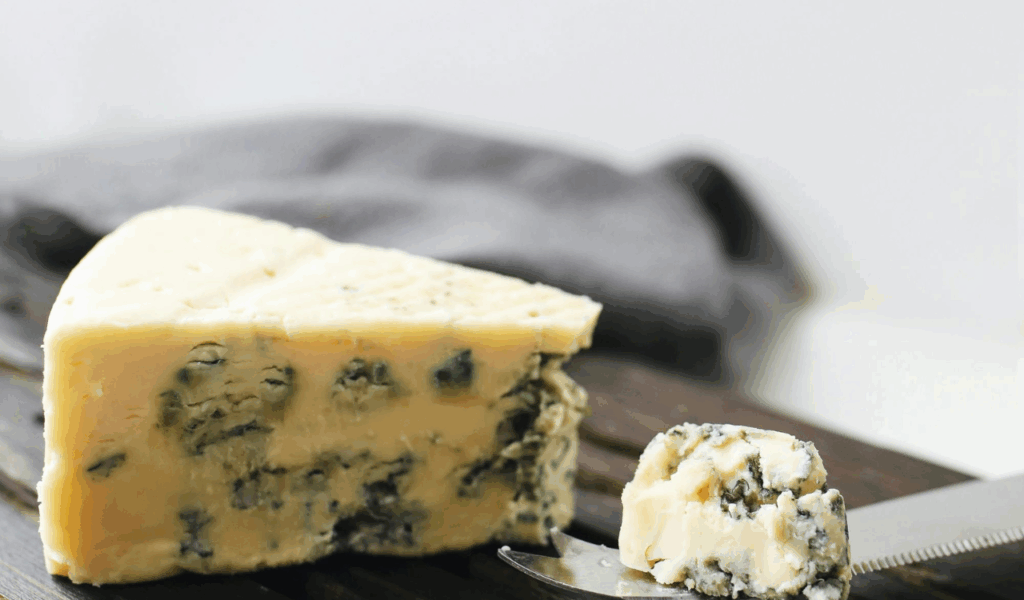
The first thing that comes to mind when you find a fuzzy spot on your block of cheese is whether you should throw the entire thing away or cut it off and eat the rest. It’s not a clear-cut answer. The moisture content, texture, degree of mold penetration, your health, and type of mold all affect how safe moldy cheese is. Instead of relying solely on conjecture, we’ll look at eight situations or guidelines regarding mold on cheese in this post to help you make a safer and more informed decision.
1. Understand What Mold Means on Cheese
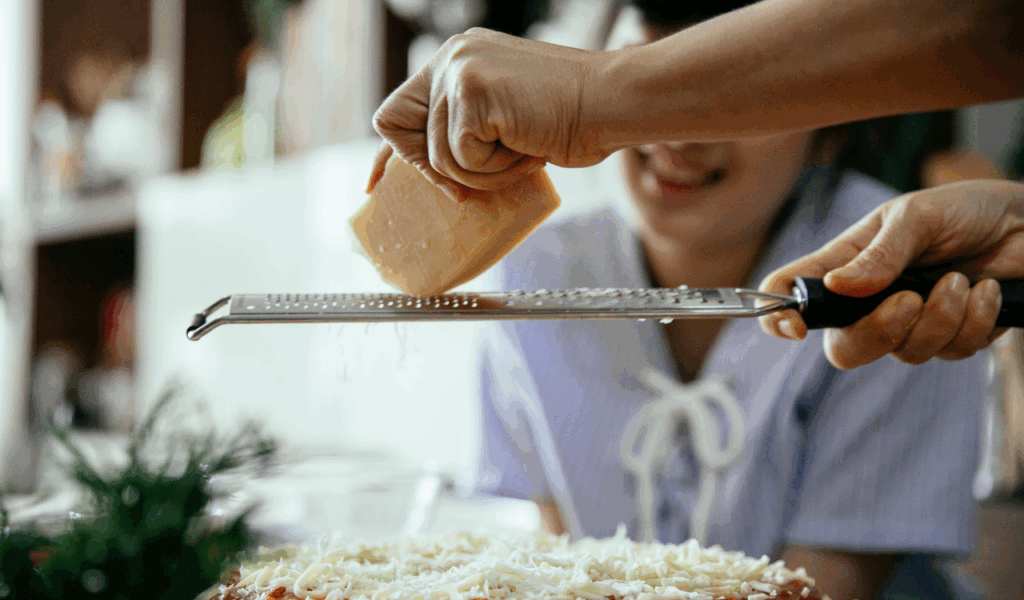
A fungus called mold grows best when it has oxygen, moisture, and the right nutrients. It can grow on cheese as a result of air exposure, changes in humidity, or surface or utensil contamination. Unintentional molds can be dangerous, but molds are a necessary component of the cheesemaking process on some cheeses (such as blue cheeses and Brie). The visible spots are just one aspect of the problem; cheese can also be penetrated by subterranean fungal threads, or mycelium, which may contain bacteria or toxins. Therefore, merely noticing mold on cheese is insufficient to determine what to do; you also need to take the cheese’s type, context, and mold severity into account.
2. Soft Cheeses: The No‑Cut Rule
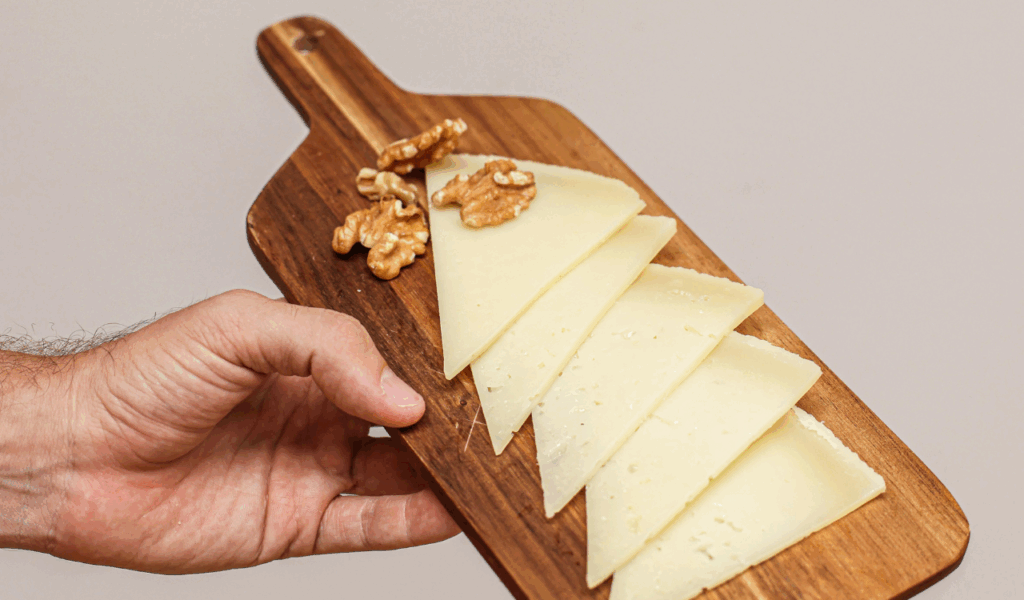
Soft cheeses with a porous structure and a high moisture content include cottage cheese, fresh mozzarella, ricotta, cream cheese, queso fresco, and chèvre. Mold can quickly grow over these cheeses. As a result, if mold develops, food safety professionals typically advise throwing out the entire block or container. The afflicted portion cannot be reliably and safely cut away, unlike firm cheeses. In most situations, the risk of concealed contamination is too high for soft cheeses, even if the mold appears to be minor.
3. Shredded, Crumbled, or Sliced Cheese: Toss It
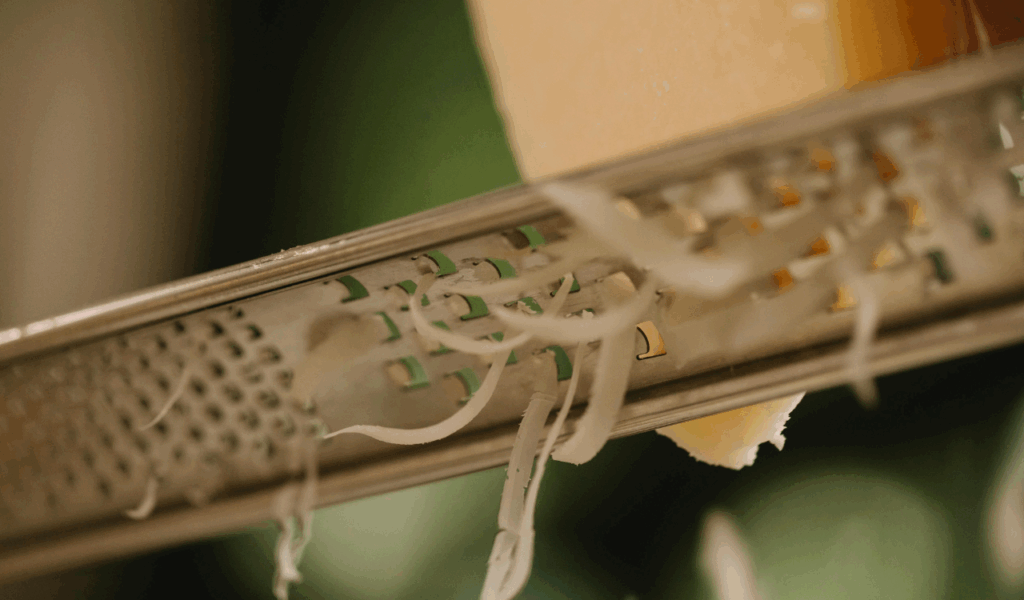
Mold should not be removed from cheese that has been sliced, crumbled, shredded, or otherwise cut into small pieces. Because of their increased exposure and ability to penetrate surfaces, mold contamination is more likely to spread widely. Mold in shredded or sliced cheese probably spreads beyond the obvious spots, so products with mold should be thrown out completely, according to USDA guidelines and several food safety sources. Only the mold can be safely removed without running the risk of cross-contaminating the other areas.
4. Hard & Semi‑Hard Cheeses: You May Be Able to Save Some
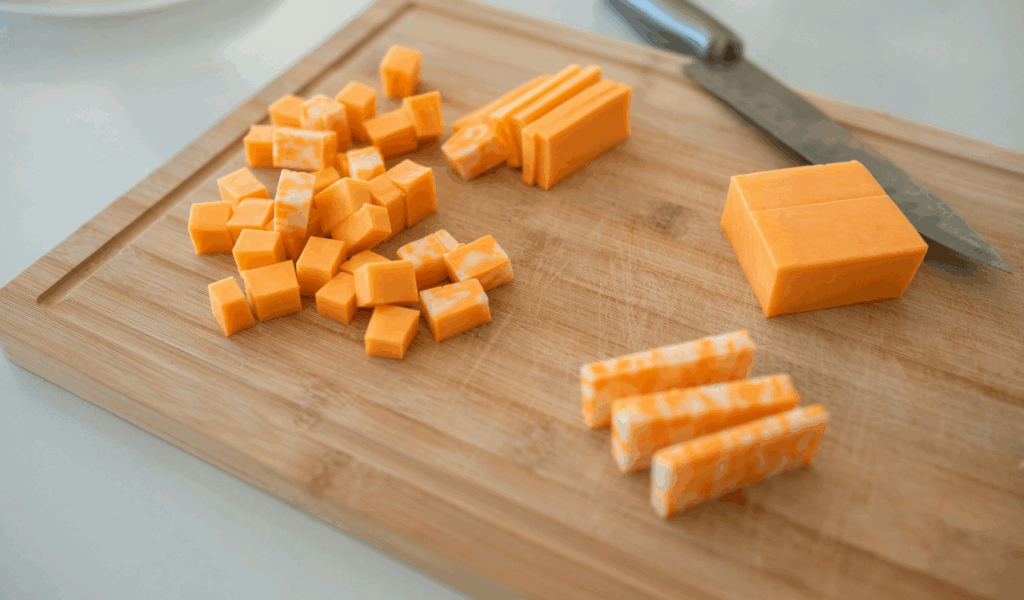
Cheeses that are firm or semi-hard, like aged Gouda, Parmesan, Swiss, and Cheddar, have denser textures and less moisture. Cutting is frequently a safe way to get rid of unwanted surface mold. It is generally advised to leave a minimum of one inch (approximately 2.5 cm) of space around and beneath the mold spot, ensuring that the knife does not come into contact with the mold. If the remaining portion appears and smells fine after removal, it is typically safe for healthy adults to eat. However, you should throw it out completely if the cheese is very small or if there is a lot of mold on it.
5. White, Fuzzy, or Colored Mold: What to Watch For
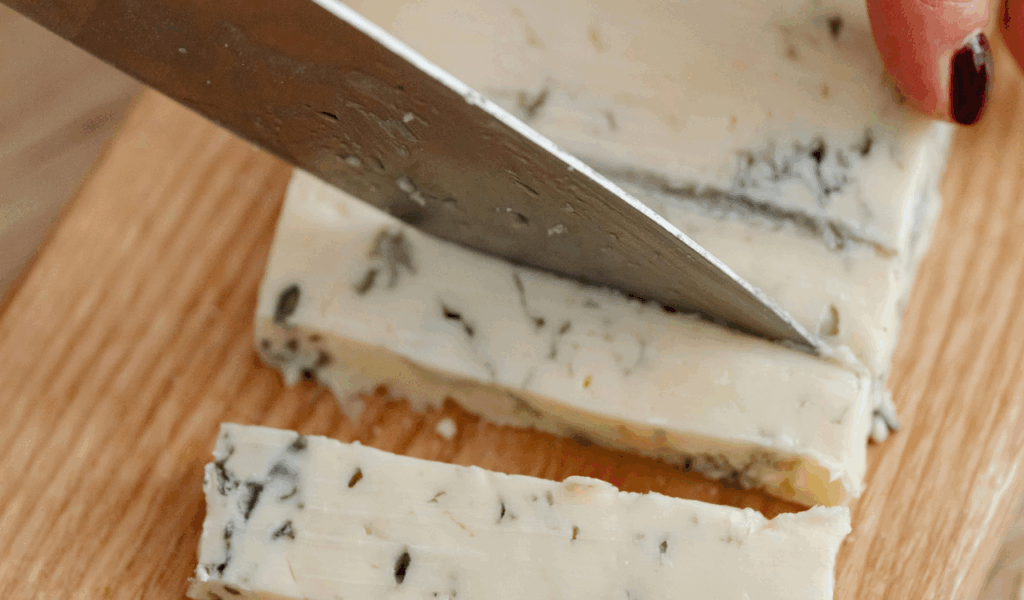
Every mold has a different appearance. Cheeses with safe, purposeful molds (like Brie’s white bloomy rind) have homogeneous, white, or bluish-green veins. Unintentional mold can have an orange, pink, gray, black, or fuzzy appearance. You should be cautious and throw away any mold that appears dark, black, or red, or any fuzzy green patches that don’t match the cheese’s typical culture. It is more likely that these molds will cause harm or produce mycotoxins. Fuzzy textures or vivid colors are warning indicators rather than ornamental elements.
6. Special Cases & Health Risks

Some people should not eat any moldy cheese product, even if it is technically possible to remove the mold. People who are more susceptible to infections, allergic reactions, or toxins include those with compromised immune systems, elderly individuals, pregnant women, newborns, and those with mold or respiratory allergies. Additionally, it is safer to discard cheese that smells bad (such as sharp ammonia notes or decay), feels slimy, or has a lot of mold on it. Although small amounts of many molds won’t harm a healthy adult, these particular populations are more at risk.
7. How to Trim Mold Safely
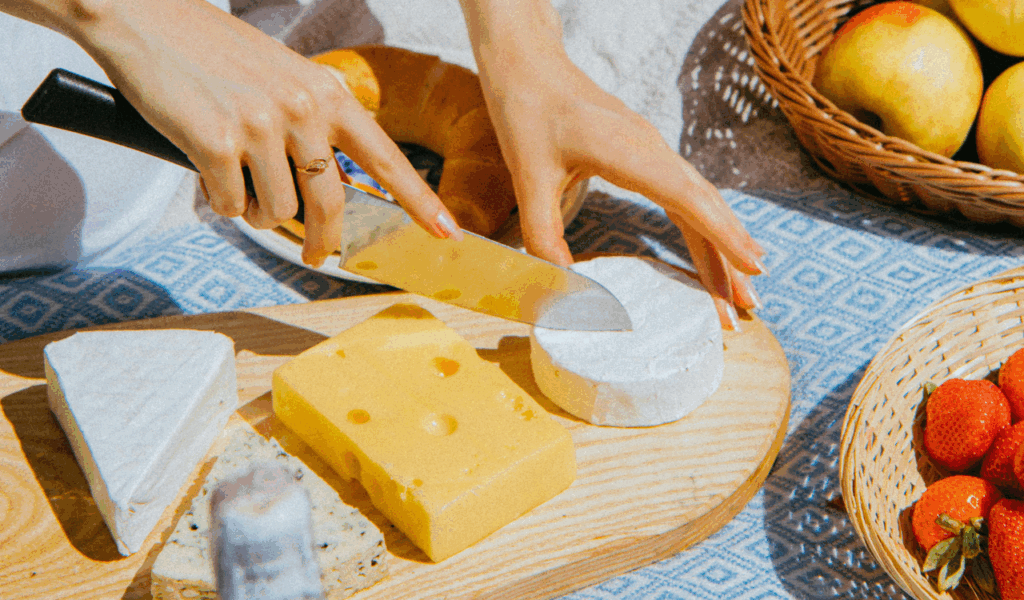
Be cautious if you choose to save a hard or semi-hard cheese. Cut a generous margin around the mold, at least an inch beyond the visible mold in all directions (top, bottom, sides), using a clean knife that you haven’t used before. Avoid letting the blade come into contact with the mold. Instead of composting or sinking, dispose of the trimmed portions in sealed trash. Store the remaining cheese at the right temperature after properly wrapping it in cheese paper or parchment paper rather than plastic wrap. Before consuming, check again. Reclaimed cheese should be used right away; avoid cutting it repeatedly.
8. Prevent Mold Growth: Smart Cheese Storage
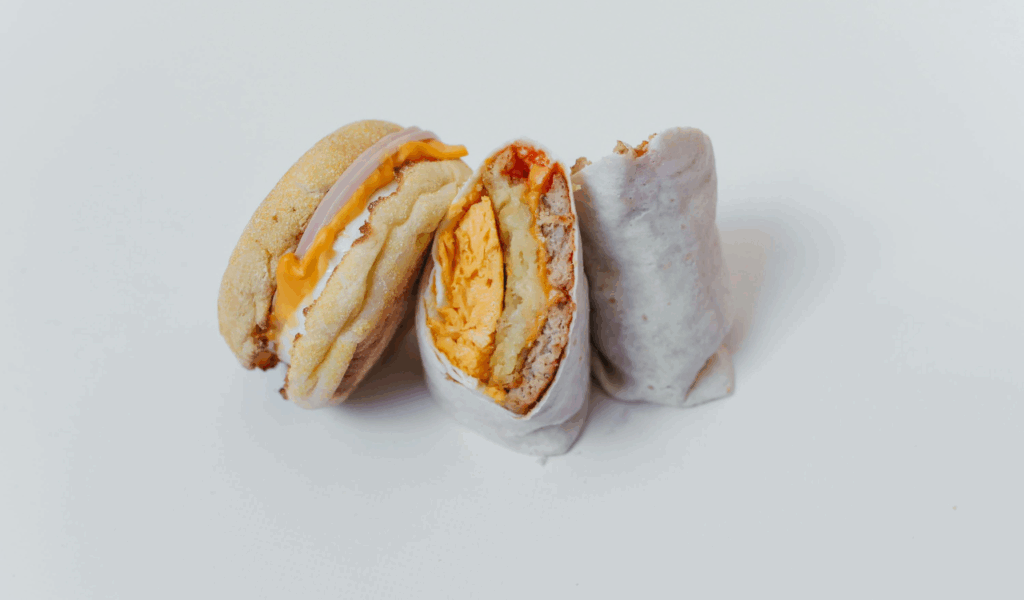
Prevention is the best course of action. Instead of using impermeable plastic that retains moisture, wrap cheese in breathable materials like cheese paper or parchment paper. Then, to protect while allowing air to circulate, store in a partially sealed container or loosely cover with foil. Cheese should be kept in a stable, consistently cool location (away from freezer vents) or in the refrigerator drawer. Always cut a fresh edge, use clean utensils, and keep your hands away from moldy areas. Cheeses should be consumed before their expiration date. Additionally, avoid crowding and promote airflow. These practices lessen waste and slow the growth of mold.

